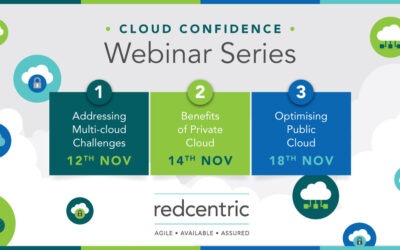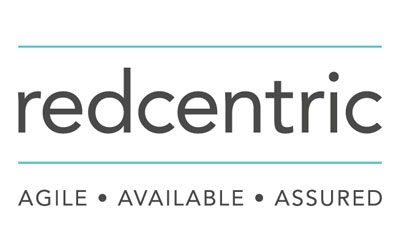Hybrid cloud is continuing to influence many an enterprise IT strategy, but there’s no denying that it can be an initially-complicated topic. So, to help guide you through this popular solution, we’ve explored what hybrid cloud is and how it works, as well as the key benefits (and drawbacks), and the reasons to opt for a hybrid infrastructure.
What is hybrid cloud architecture?
Hybrid cloud is growing in popularity, fuelled by its ability to give organisations the best of multiple worlds. With hybrid cloud solutions, users can now enjoy a cost-effective, highly manageable mix of two or more computing environments made up from on-premises, collocated, private, or public clouds that remain separate, but share standardised technology.
This has revolutionised cloud technology, and allows you to manage and move workloads securely and effortlessly.
How does hybrid cloud work?
Hybrid cloud solutions are built around their inherent ability to be tailored to suit an organisation’s particular operational needs. The aim is to achieve the optimum co-existence of on-premises systems alongside virtual cloud platforms, allowing businesses to securely and cost-effectively select the right environment for the right purpose at the right time – every time.
The technology perfectly balances the benefits of the two cloud flavours:
- The low-cost, rapidly-scalable, and quick-to-deploy capabilities of public cloud.
- The greater control, security, and customisation afforded by private cloud.
The benefits of hybrid cloud
The growing consumption of cloud computing has previously risked being throttled back because of hesitancy over abandoning on-premises computing – and yet to do that would be to miss out on the economic and operational benefits offered by the cloud model.
Hybrid has removed that quandary by allowing you to combine on-premises and public and private cloud platforms, and leverage each one to maximum effect. With that in mind, hybrid cloud benefits include:
1. Resource management
Hybrid cloud solutions combine on-premises resources with public cloud versatility, which facilitates flexible resource management. For instance, during periods of low user demand, you can rely on your own in-house servers – and during periods of high demand, utilise the power of your chosen public cloud. Alternatively, consider storing sensitive data internally, and leveraging public cloud services for non-critical tasks.
2. Faster to market
Hybrid cloud allows you to launch products to market quicker than if you were relying solely on private cloud. Instead of having to invest in the required hardware and servers, you can leverage public cloud resources to test and accelerate innovation – which means quicker refinement.
3. Align IT to business needs
Hybrid cloud is wholly flexible and customisable, meaning you can assign IT resources around business needs, workload, and fluctuating demand. An essential branch of your IT infrastructure, hybrid cloud architecture will always directly support business goals.
4. Enjoy efficient scalability
With hybrid cloud architecture, you can scale up and down while maintaining complete control and supervision of resources. This elasticity means you’re never using more resources than required, and have additional cloud capability at short notice if needed.
5. Data security
Data security should always be a primary consideration when embracing any new technology – and it’s something hybrid cloud solutions offer in abundance.
By combining private and public cloud, you can encrypt sensitive data within your own secure servers – giving you complete control over your most critical information – while less-sensitive data can be kept within a (still fully-secure) public cloud environment.
6. Cost-efficiency
Through strategic resource allocation, hybrid cloud solutions deliver cost efficiency. For example, you might choose to leverage public cloud’s pay-as-you-go model to conduct testing and tasks at scale, without having to invest in costly infrastructure, while keeping everyday workloads in-house.
7. Increase business agility
An adaptable and effortlessly-scalable resource, hybrid cloud solutions align to business needs to improve agility, and allow you to experiment, develop, and innovate with ease – so your business can act proactively, react effectively, and stay ahead of the curve.
8. Reliable disaster recovery
Hybrid cloud offers an effective safety net in case of natural disaster – allowing you to back up important data to a public cloud network, away from your private cloud servers. This means that, even if your on-premise hardware and infrastructure is compromised, you still have immediate-access to critical information, and can continue business operations with minimal delays.
What are the drawbacks of hybrid cloud?
While there are no doubt a whole host of advantages, as is evident above, it’s equally important to have a thorough understanding of hybrid cloud disadvantages too – to get a better idea of whether it’s the right solution for your business:
Complicated infrastructure
Because you’re blending public and private cloud services, there is an element of complexity to hybrid cloud architecture, so you’ll likely need to adopt the services of an experienced cloud consultant.
Maintenance cost
While hybrid cloud doesn’t necessarily require the same level of maintenance as a purely private cloud, your on-premise infrastructure will need to be managed to a degree. So, you’ll need to budget for regular IT consultancy and care.
Reliance on internet
As with public cloud, hybrid cloud infrastructure relies on you having a secure internet connection to access remotely-stored information and data. If this is a dealbreaker, a private cloud might be more appropriate for your business.
Why choose hybrid cloud?
Organisations are choosing to go the hybrid cloud solution route, as it enables them to optimise rather than forcing them to compromise: they can now build the mixed environment that best-suits their needs at all times, rather than having to pursue a singular-but-imperfect route.
For example, you might want to leverage public cloud capabilities, but may still have significant investment in legacy hardware that you wish to retain; or may have a simple preference to maintain on-site compute resources; or have applications and workloads that don’t lend themselves to a cloud platform. In each case, hybrid cloud might be the most appropriate course.
How to set up a hybrid cloud
If you’re interested in investing in hybrid cloud infrastructure, there are a few key processes to follow to make sure you choose the best possible solution:
- Assess your existing IT infrastructure and identify where you’ll best-benefit from public cloud capabilities (to complement in-house services).
- Choose a cloud provider (such as Amazon’s AWS or Microsoft Azure) and establish your hybrid architecture – including data and resource management.
- Implement workflows across the relevant environment.
- Monitor performance and progress and streamline processes to improve efficiency.
But most importantly, to capitalise and benefit from the best of public and private cloud – because not all platforms behave the same – you’ll need effective integration and co-ordination between your various environments.
With this in mind, it’s typically advised that you acquire the services of an experienced cloud professional, to ensure you’re maximising efficiency (both financially and resourcefully). For more information, explore more about how a cloud consultant can help – or discover our full cloud blog to uncover further advice, such as the difference between hybrid cloud and multi cloud.



